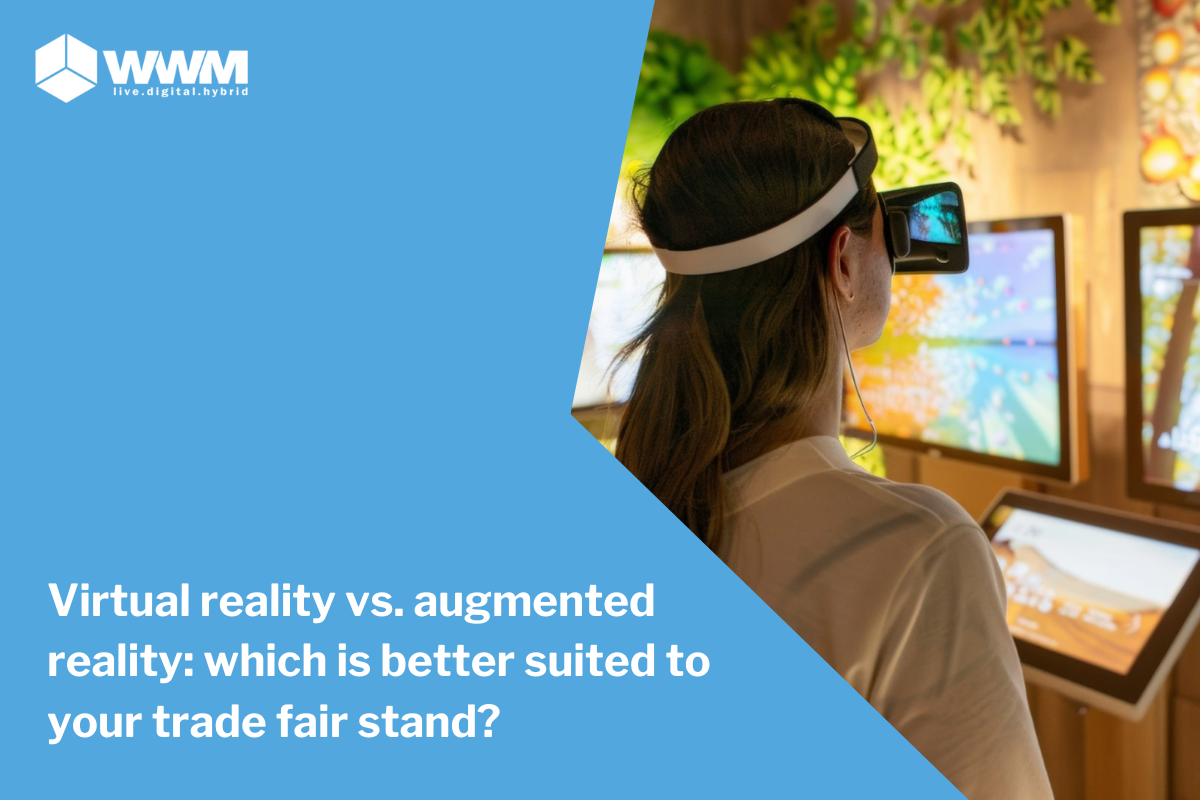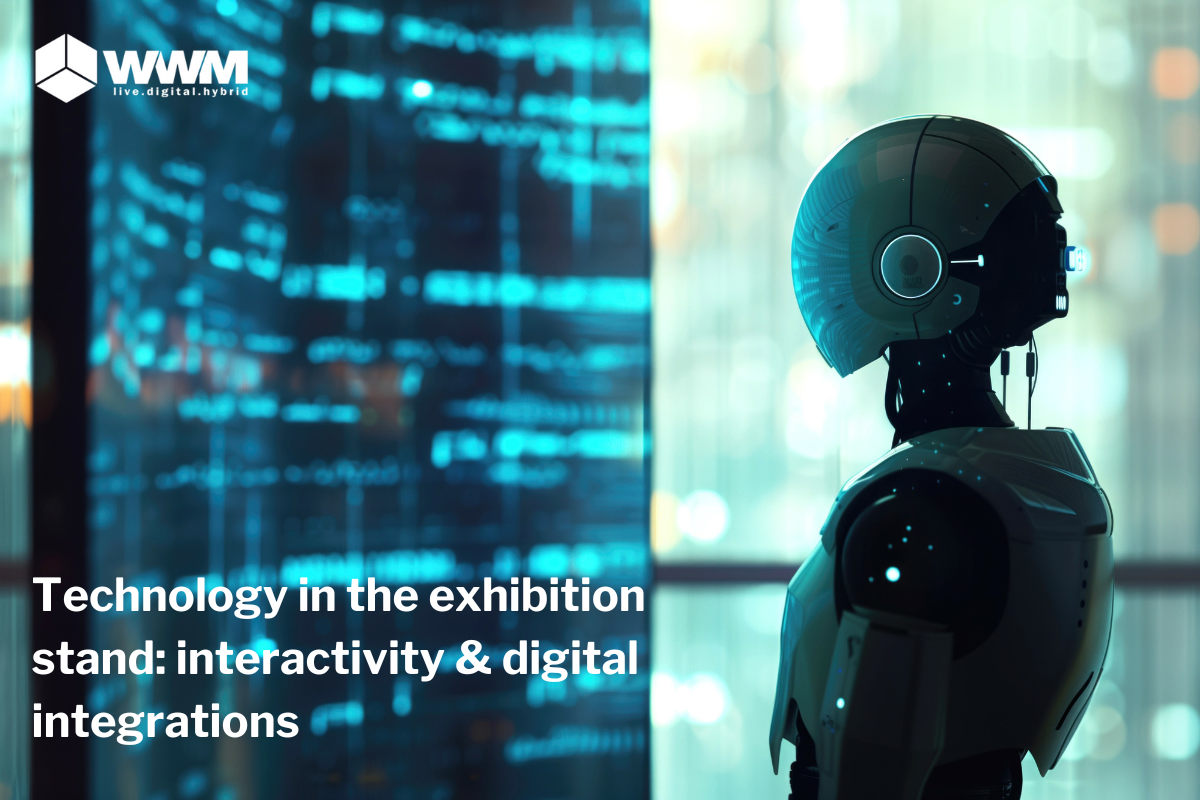Technology on exhibition stands: interactivity & digital integrations
The traditional trade fair presentation has changed dramatically. Nowadays, interactive elements and digital integrations have become indispensable...
3 min read
Maxima Matara
:
Friday, 25. October 2024

If you are planning your exhibition stand, you have probably already realised that it is important to offer visitors a unique experience The days of simply presenting products on a table are over Today, it's all about captivating visitors, surprising them and giving them an interaction that will stay with them for a long time Two of the most exciting technologies that make this possible are virtual reality (VR) and augmented reality (AR) But which one is better suited to your stand As experienced stand builders, we take a look at the respective application possibilities, advantages, integration and a cost-benefit analysis of both technologies
Virtual reality creates fully immersive experiences in which users are immersed in an artificially created 3D environment. This opens up a wide range of possibilities for trade fair stands:

For concrete examples of how virtual reality can be used successfully, take a look at the Metapilots references
In contrast to VR, augmented reality adds digital elements to the real environment. Visitors see their real environment through a camera, special glasses or even stationary devices such as tablets or touchscreens, which are supplemented with interactive content. The advantages of AR for trade fair stands are clear:
You can find more details on this stand in our case study.
Virtual Reality (VR)
With virtual reality, space is a particularly important point When your visitors move around in virtual worlds, they should have enough space to avoid bumping into anything You also need powerful technology - VR goggles, powerful computers and possibly trained staff to show visitors how everything works The advantage: visitors are usually so impressed that they are happy to take their time
Augmented reality (AR
Augmented reality, on the other hand, is much easier and more flexible to incorporate Ideally, your visitors only need their own smartphone or tablet - or you can provide a few devices AR can be used directly on your real products or on flyers without requiring a lot of space The technical effort is usually lower and visitors quickly feel familiar with the application as they do not need to wear additional devices such as VR glasses
.png?width=1200&height=800&name=VR%20vs%20AR%20(1).png)
Virtual reality (VR)
The investment costs for VR are generally higher than for AR. High-quality VR goggles, powerful computers and the development of customised VR content can quickly run into the budget. However, VR offers an incomparably immersive experience that is particularly worthwhile for high-quality products and exclusive experiences. The potential benefits lie in the intensive customer loyalty, the ability to explain complicated products simply and the ‘wow effect’ that anchors your brand in the visitor's memory.
Augmented reality (AR)
AR is more cost-effective in comparison, as many visitors already have their own devices (smartphones) and the development of AR content is usually less costly. The barrier to entry is lower and AR can be quickly and easily integrated into various areas of your trade fair stand. The benefit of AR lies in the direct interaction with the real products and the possibility of conveying additional information in a playful way. Thanks to the flexible application options and the high level of acceptance among visitors, AR can score particularly well with a broad target audience.
The choice between virtual reality and augmented reality depends on your goals, your budget and the character of your exhibition stand. Do you want to offer a particularly immersive experience and present complex or difficult-to-access products? Then VR could be the right choice for you. If, on the other hand, you are more interested in an uncomplicated and cost-effective extension of your exhibition stand that visitors can use on their own devices, AR is the better option.
As stand builders, we are happy to advise you and help you integrate the right technology for your requirements. Whether VR or AR - both technologies offer unique opportunities to turn your exhibition stand into a real visitor magnet!

The traditional trade fair presentation has changed dramatically. Nowadays, interactive elements and digital integrations have become indispensable...

Trade fair presentations have changed fundamentally in recent years. In the past, pure product presentations dominated, with exhibitors standing...

Presenting a product at a trade fair is often a challenge, especially if the product is difficult to transport. In such cases, companies often rely...